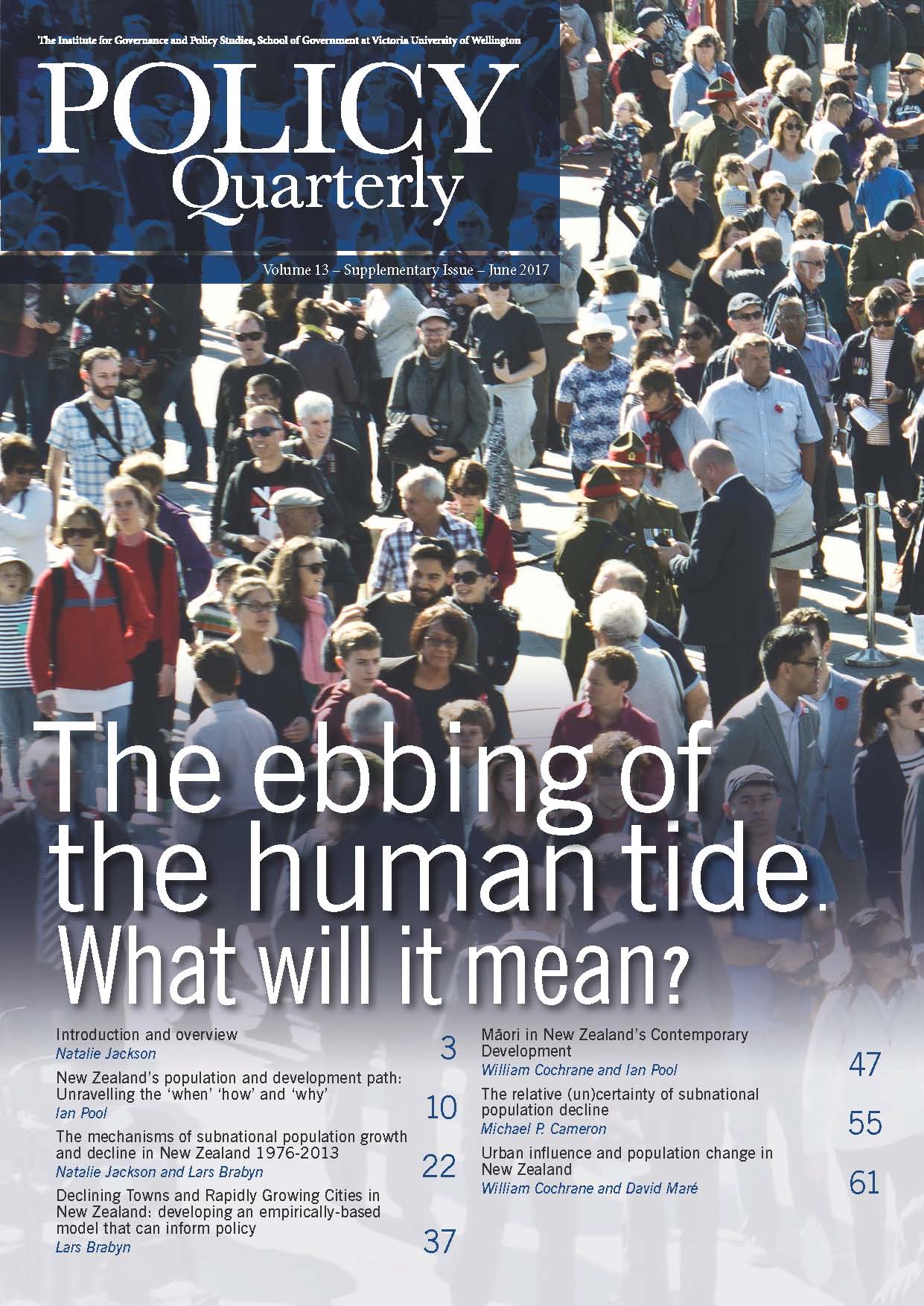Māori in New Zealand’s contemporary development
DOI:
https://doi.org/10.26686/pq.v13i0.4555Keywords:
Māori contribution to population replenishment and economic development, ‘total social production model', Māori birth cohorts, child-capital contribution, working age population, Māori employment ratesAbstract
By conventional economic indicators, such as GDP per capita and unemployment, New Zealand is among the better off of the OECD countries (OECD, 2015). This, however, is not true for all areas in the country. The other empirical articles in this issue focus on the disparities between towns and rural centres across New Zealand, especially those in decline. This article takes a different approach, focusing on the contribution of Māori to national and sub-national population and development.
Downloads
Downloads
Published
Issue
Section
License
Permission: In the interest of promoting debate and wider dissemination, the IGPS encourages use of all or part of the articles appearing in PQ, where there is no element of commercial gain. Appropriate acknowledgement of both author and source should be made in all cases. Please direct requests for permission to reprint articles from this publication to Policy-Quarterly@vuw.ac.nz.



